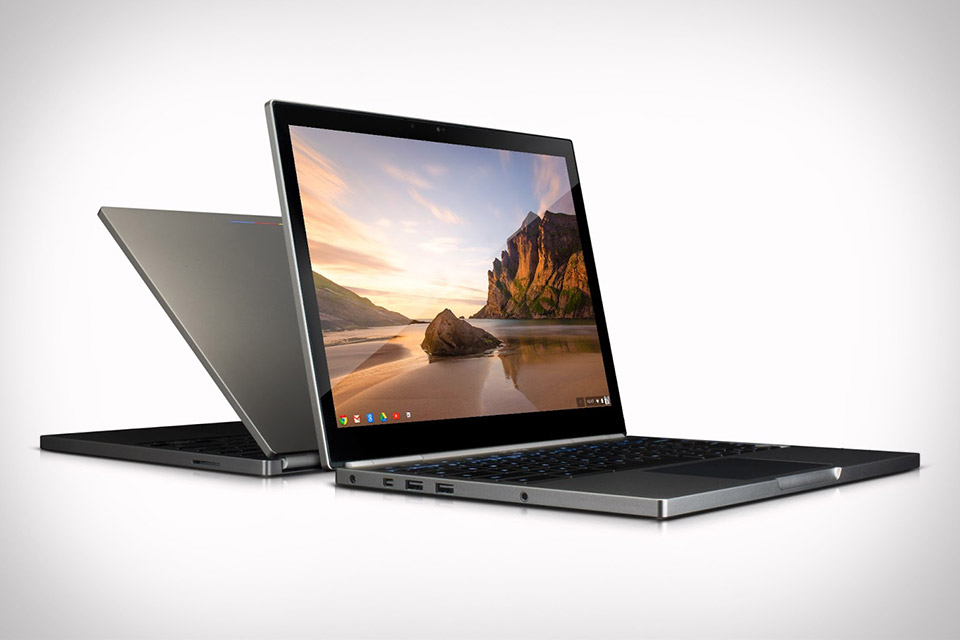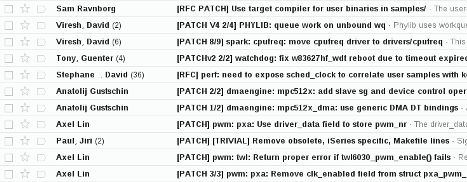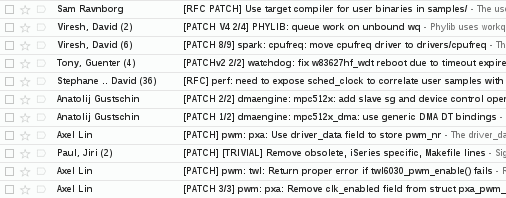Why Linus Torvalds loves the Chromebook Pixel: it's all about the display

Yes, Google Chromebook Pixel with a price tag of $ 1299 for a model with only Wi-Fi is very expensive. But he found a powerful friend in the face of Linux creator Linus Torvalds. Why? This is how Torvalds himself explains : "In short, everything rests on the screen."
Torvalds always liked the Chromebook Pixel screen. He praised him for his “beautiful screen” as soon as he began working with him. It's not about Chrome OS — the lightweight version of Linux from Google with the Chrome browser as the interface — and not about other Pixel components. For him, it's all about the screen.
')
Torvalds writes:
In short, everything rests on the screen. The rest of this car is nothing particularly remarkable. Everything else is just “adequate,” and you know what? It doesn't even matter. I was only interested in the screen, and, perhaps more importantly, it is the screen that makes it work.
I could write a lot more about the disadvantages of this car, because, frankly, otherwise it is of little interest. Can find better. But in the end I deleted all my comments about the shortcomings of the other components, because in the end, for me, it simply does not matter. Other components are only “good enough” for everything to work, but the screen has made the whole game for me.
In particular, the Chromebook Pixel is equipped with a 1.8 GHz Intel Core i5 processor. He has 4 GB of memory, 32 GB of storage space on the local SSD plus 1 TB of free space in the Google Drive cloud for a period of three years. There is also a Wi-Fi-module 802.11 a / b / g / n, a high-definition camera, a pair of USB 2.0 ports, a two-card reader in one SD / MMC, DisplayPort. Actually, the display, so pleasing to Torvalds, has a diagonal of 12.85 inches and a resolution of 2560 × 1700 with a pixel density of 239 per inch. This is better than the Retina display on Apple's MacBook Pro.
Torvalds noted that many people cannot understand how the Pixel display is so much better than the screens of the vast majority of other laptops, and therefore decided to show them the difference. “Since some people cannot understand the meaning in a high-resolution screen, I’ll show a small example of why you need such a screen, and especially if you work a lot with text (eg, mail or source codes,” he writes .
Here is an example of the display “with a 1080p screen (a simple zoom out using cubic interpolation in the Gimp: a real redrawing of fonts with reduced size will lead to a slightly different result, but generally the same)”:

Torvalds notes: “And do not forget that this is still a good screen, and some even think that it’s excellent. In fact, most laptops have a 768p screen, and the text on it will simply not be read. ”
Then comes “a part of a real screenshot from my Pixel with a font that I actually use and find quite readable on this screen. Yes, it is small, but readable, and it is small enough to see 50 letters at the same time (this is a fragment of my lkml [Linux Kernel Mailing List] folder in Gmail in a compact form in Chrome, if anyone is interested. "

Torvalds continues: “And you know what? Yes, at 1080p, the text can be read. But compare the two screens and ask yourself the question, which of them strains your eyes less, because it is clearer and easier when reading. And if you still think 1080p is “good enough,” I can only say that you are either a) stupid like f * ck, or b) deny the obvious. ”
I understand his point of view. Not one, he thinks so. Our own mobile guru, James Kendrick, recently wrote: “High resolution, even higher than the famous Retina display, is a pleasure to use. The text appears sharp like a razor, the graphics are just a fairy tale. ” I agree. Pixel display is gorgeous.
Is he worth his money? For Torvalds - definitely. But he adds: “Don't get me wrong: this is absolutely not an ideal machine, and the price is definitely too high for its mass distribution. But I hope that this is the beginning of a trend, and over time, good screens will not only be on Pixel and MacBook Pro. ”
Maybe Torvalds is right. It is necessary to get used to the display Pixel, and displays of other laptops will already be perceived second-rate.
PS from the translator. In fact, Torvalds does not bring two screenshots, but three, but how they are related to each other is difficult to understand from his post on Google+. Here are the direct links: 1 2 3 . Probably the real screenshot with Pixel is the second, which the author of this article for some reason decided to reduce. In this translation, the third screenshot of Torvalds is shown as a screenshot from Pixel. The first screenshot in the original article is identical to the first Torvalds, but increased in size; here is also given by the post of Thorvalds.
Source: https://habr.com/ru/post/175253/
All Articles